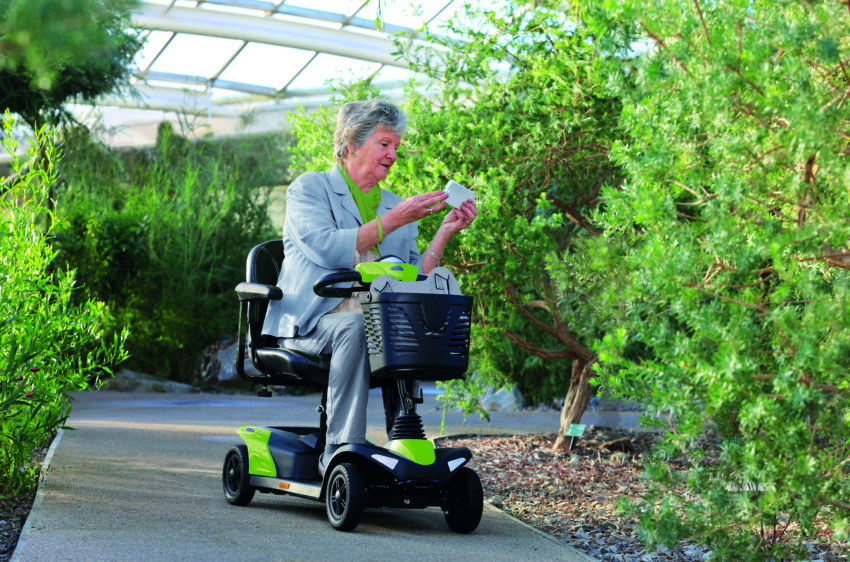
When considering the term ‘small’ and in this instance a ‘small mobility scooter’ we need to ensure there is context.
As the term is subjective (your opinion of small will be different to mine) we need to explore size options before considering why you might make certain choices.
Size
To give some context there are a range of scooters available with varying differences in dimension. However, scooters are generally categorized as micro/portable/travel, small (can still be dismantled), medium (cannot be dismantled), large/off road or long range.
However, it is the Colibri and Leo that provide the smallest in terms of dimensions with a backrest width of 465mm, drive width 505mm, length 1010mm and turning diameter of 1940/2200mm (3 wheel/4 wheel respectively).
It is important to recognise that when we use the term small it often creates the perception that we mean ‘too small’, tight or limited space. In this instance we simply mean small in context where any other sized mobility scooter may be too large either for the person, the task or the environment.
What to consider
Person
First and foremost the scooter needs to be comfortable whilst offering the appropriate physical support. Too much seat width or depth can encourage poor posture and make sitting upright. Good posture is so critical to ensure both safety and long-term maintenance of health and well-being so it is important to know the users own sizes including leg length, back length, hip and shoulder width (body measurements are also known as anthropometrics).
Activity
The purpose of buying a scooter is usually to support engagement in some form of social or outdoor activity. When considering a small mobility scooter the user therefore needs to determine what they are likely to be using it for most commonly. For example, if they intend to shop using the scooter it needs to enable them to maneuver between rails or narrow aisles.
Environment
Generally the environment is the main reason a person considers a small mobility scooter specifically. Linked directly to activity, this is the consideration of where the task is going to be completed and the impact therefore of scooter size on the ability to complete it safely, independently and efficiently.
Consider for example:
1. The intent to use an indoor mobility scooter around the home. The dimensions of the small mobility scooter must be appropriate for the person’s body shape/size but also narrow enough to get through internal doorways, short enough to allow access to cupboards/sinks with a turning diameter/circle small enough to allow maneuverability.
2. Using a mobility scooter as a tool to access social activities is ideal. Consider whether the scooter needs to enter a store or building and if so what is the access like? Some small mobility scooters (although certainly not all) compromise a little stability or robustness as they are designed for urban or flat surface use so it’s crucial that size is considered in conjunction with other important features based on the users need.
Ultimately size can be contextual and although in the context of physical measurements some are smaller in certain aspects than others, size should truly be determined by combining the needs of the person, the activities they are engaging in and the environment in which the scooter is being used.
However, as described by physical measurement a small mobility scooter can be clearly defined.
Keep reading
** This post was originally published on https://www.passionatepeople.invacare.eu.com/considering-a-small-mobility-scooter-what-you-need-to-know/


